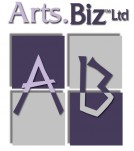The concept of right brain and left brain thinking developed from the research in the late 1960s of an American psycho-biologist called Roger Sperry. He discovered that the human brain has two very different ways of thinking. One (the right brain) is visual and processes information in an intuitive and simultaneous way, looking first at the whole picture then the details. The other (the left brain) is verbal and processes information in an analytical and sequential way, looking first at the pieces then putting them together to get the whole. Sperry was awarded a Nobel Prize in 1981, although subsequent research has show things aren't quite as simple as once thought. Creative types often complain of not understanding business things and this why.
Its true we do have only one brain, but it's got various individual parts. There is the cerebral cortex that controls rational functions, and is the main part that is made up of two halves. These two halves are connected by masses of nerve fibres which allow 'messages' to pass between them. Funnily enough these halves are commonly called the right brain and left brain. For some reason, our right and left hemispheres control the opposite side of our bodies, so the right side of our brain controls our left side and processes what we see in our left eye while the left side of our brain controls the right side and processes what our right eye sees.
Surprisinly it has nothing to do with which hand you use as your dominant hand either, being left handed does not make you a predominabtly right brain user nor vice versa.. And, remember, just like you don't do everything with only the one hand, so your brain doesn't do everything with one side, although there is generally a preference. It has been noted however that a significant number of artists are left-handed, and more so than would be suggested by the one-in-ten occurence of left-handedness in the population.
So how does the Right Brain / Left Brain Concept relate to Artists? Well when you start a painting, its necessary to be able to visualise the finished artwork in your mind (this is the right brain, working from the whole), then start developing the painting, chosing the elements, matching and mixing colours, placing in the shadows and highlights (this is your right brain working on various things simultaneously, cool aye!), but at the same time be able to look critically at what you've doing (so the left brain comes in and it is being analytical, also a necessary part of the process!).
Though right-brain or non-verbal thinking is often regarded as being more 'creative', there is no right or wrong here; it's merely two different ways of thinking. Just like being right-handed is not superior to being left-handed, although its amazing how often we still hear this ‘ideal’ from some right-handed individuals (Can you tell Im left-handed?!). What's important is to be aware that there are different ways of thinking, as well as knowing what your natural preference is, and if it's strongly verbal (as in left brain) rather than visual (the right brain) you can be open to trying new approaches which deliberately approach painting or drawing in a right-brain sort of way. Its rare that artists do both realistic type work (What they can see.) as well as imaginative type work (What they can't physically see!) at the same time, but it doesn't mean it doesn't happen, its just that most seem to choose to stick to one or the other. I personally hav found that it takes quite a bit of 'brain power' and energy to switch over at times!
Most of us have heard of the book ‘Drawing on the right Side of the Brain’ by Betty Edwards. In this book Betty puts forward techniques which you can use to consciously access the right side of the brain with your drawing; it helps you draw or paint what you see rather than what you know. It's become a cult classic and has helped many people to draw who thought they couldn’t before. I had a go at some of the techniques along with one of my daughters who thought she couldn’t draw and we enjoyed the process. Turned out my daughter could draw and really well but I needed to be able to show her this method to get her started! I think it’s often just a mental block or fear of failing that makes people not try art! So if you know someone like that, get them this book!
